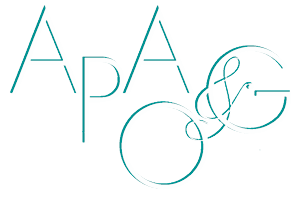PROGRAM HIGHLIGHTS
Update from the Experts
We feature eminent clinician-researchers in female sexual health highlighting recent major advances in the field. Topics range from the health impact of different forms of estrogen delivery (intradermal versus oral), new insights into vulvodynia etiology and treatment, and critical issues underlying symptom and disease classifications that will impact coding and future research on sexual desire and arousal disorders.
The Logic of Chronic Pelvic Pain
Pain is a common human experience. Chronic pelvic pain, however, is not. When chronic pelvic pain interferes with daily life—directly by avoiding activities that hurt or indirectly through mood disturbances, stress, poor sleep, social isolation—sex loses its luster and exacerbates the impact of pain. A pioneer pain scientist will speak on the real reasons why chronic pain is so tough to experience, assess, and treat in the clinic: chronic pain breaks normal physiological rules in surprisingly consistent ways. Moreover, these counter-intuitive “rules” clarify the causes and psychological consequences of chronic pain. Without mincing words, attendees will understand chronic pain more deeply than the majority of the medical and clinical professions.
Persistent Genital Arousal Disorder
An equally debilitating condition that desperately needs clinical and scientific attention is persistent genital arousal disorder (PGAD). Our current understanding of this perplexing symptom complex reflects the efforts of a few deeply committed researchers, yet more momentum is needed to push the science forward. We will hold a research symposium dedicated to PGAD, led by prominent clinical and basic science researchers who will collaborate in generating essential research on the topic. Novel findings will be presented, and collaborators will propose an action plan for priority research on the mechanisms, manifestations, clinical assessment and treatment of the condition. This experimental symposium is a unique opportunity for ISSWSH to directly facilitate scientific discovery and disseminate new knowledge about PGAD.
Trauma and Resilience
We present a symposium that highlights why the principles of learning and memory are also essential to protection of women’s sexual health. Many women experience the devastating fallout of sexual assault and trauma, and their healthcare needs are complex and unique to each individual. In some traumatic situations, a very powerful form of emotional learning can trigger post-traumatic stress disorder (PTSD). The sexual consequences of sexual trauma and PTSD will be discussed in the larger context of a woman’s recovery and resilience as well as interventional strategies.
“Our bodies are instruments, not ornaments.” (Gloria Steinem)
A woman’s body is her instrument in the world: it supports her actions, helps her pursue her goals, unites her with loved ones, brings her pleasure, propels her away from danger, and helps her bear and nourish new life. A unique symposium will focus distinct approaches to pelvic floor physical therapy and will be particularly relevant to those who care for women with genito-pelvic pain/penetration disorder, incontinence, comorbid pain disorders, injuries, or disabilities that have impacted the tension, stability, and control of the pelvic floor muscles. This complex network of muscles work synergistically to provide stability, support posture and core strength, facilitate arousal, and mount defensive responses to potential threat. We will learn about different ideologies that have shaped theory and practice of contemporary physical therapy and how these divergent approaches can benefit personalized treatment approaches and psychoeducation.
Pleasure, Revisited
The orgasm is often discussed as a destination. We will delve into the modern science of orgasm that is led by researchers using state-of-the-art technology to identify objective indicators of orgasm. Interestingly, this research has highlighted the inherent interactions between pleasure and pain. And speaking of pleasure… Betty Friedan famously quipped, “No woman gets an orgasm from shining the kitchen floor.” Whereas the personal massagers of previous generations resembled utilitarian kitchen appliances, modern sex toys look like rainbow-colored Dali sculptures. Sex toys have become a staple ingredient of the modern sexual diet, particularly for women. We present a special historical lecture that explores the sociocultural environments that initially popularized sex toys, the justifications of their use, and the recent acceptance of sex toys as essential sexual accessories.
On behalf of the Scientific Program Committee, I invite you to join us in exploring how these ideas can enrich the sexual lives of women, as well as your practice. I will see you in Atlanta!
Melissa Farmer
Chair, Scientific Program Committee
Contact Details
ISSWSH Executive Office
PO Box 1233
Lakeville, MN 55044
USA
Phone: +1 (952) 683 9025
Fax: +1 (612) 808 0491
Email: info@isswsh.org
